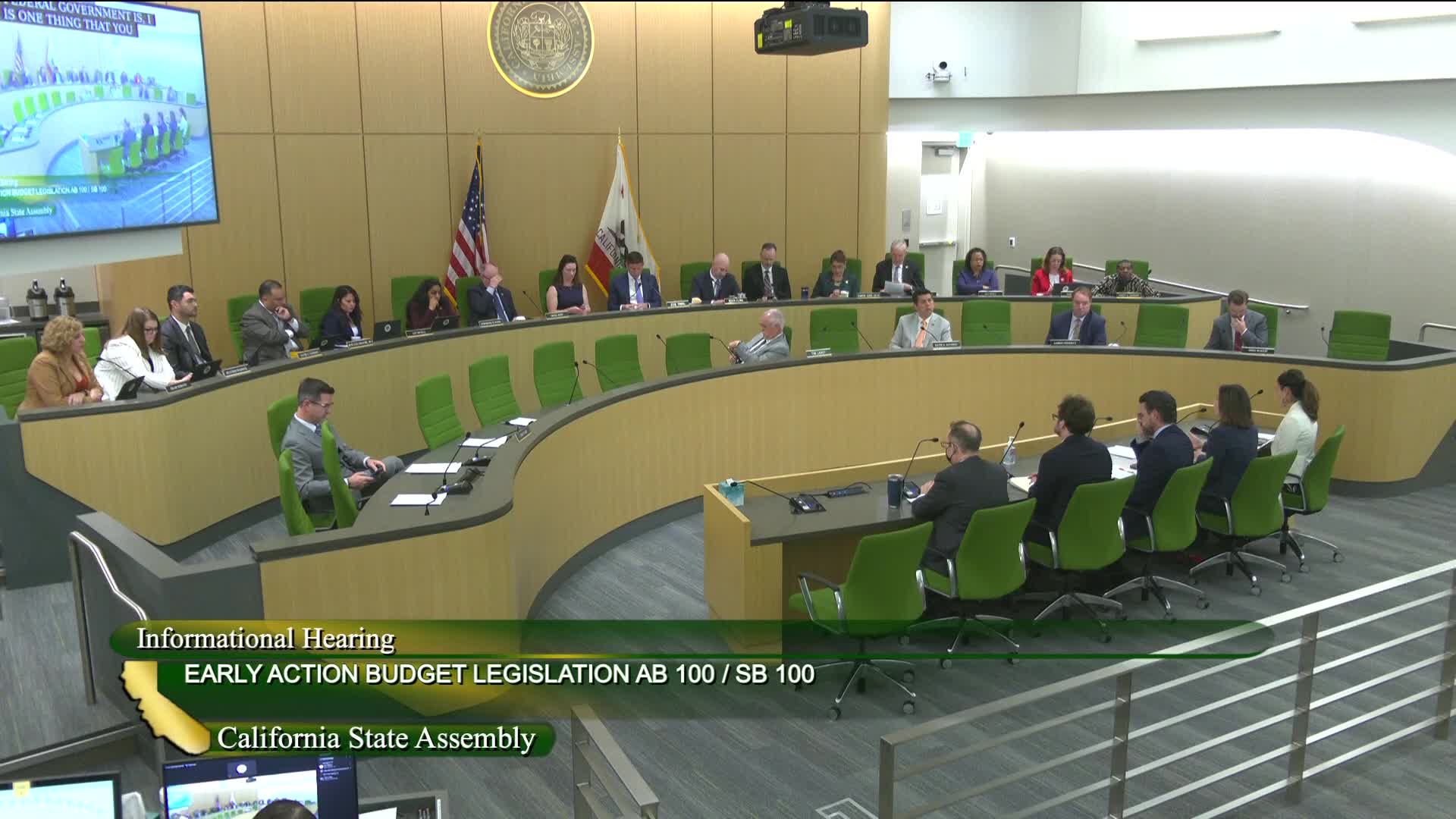California Assembly debates Medi Cal budget amid rising healthcare costs and population growth
April 10, 2025 | California State Assembly, House, Legislative, California
This article was created by AI summarizing key points discussed. AI makes mistakes, so for full details and context, please refer to the video of the full meeting. Please report any errors so we can fix them. Report an error »

In a recent meeting of the California State Assembly's Budget Committee, significant discussions centered around the Medi-Cal program, highlighting the challenges and complexities of healthcare funding in the state. As the committee navigates a challenging budgetary environment, the implications of rising healthcare costs and changing demographics were at the forefront of the conversation.
The meeting revealed that Medi-Cal, California's Medicaid program, has seen a substantial increase in both caseload and expenditures, largely due to policy changes and the ongoing effects of the COVID-19 pandemic. Currently, the program serves approximately 15 million Californians, a notable increase from around 12 million prior to the pandemic. This growth is attributed to expanded eligibility criteria, including coverage for undocumented immigrants and increased enrollment among low-income individuals.
Key points discussed included the removal of asset limits for Medi-Cal eligibility and the transition back to a fee-for-service model for pharmaceuticals, which has led to unpredictable costs for the state. The committee noted that while the general fund spending for Medi-Cal is projected to be 7.5% higher than the previous year, the actual costs have exceeded initial forecasts, raising concerns about budget overruns. Specifically, the allocation for undocumented immigrants was highlighted, with actual spending reported at $9.6 billion against an initial budget of $500 million.
Assembly members emphasized the importance of understanding these budgetary pressures within a national context, as other states are facing similar challenges with their healthcare programs. The discussion underscored the need for careful consideration of healthcare funding as part of the broader state budget, particularly in light of potential federal cuts that could exacerbate the situation.
The committee also addressed the demographics of Medi-Cal recipients, noting that a significant portion of the population includes families, seniors, and individuals with disabilities. This demographic reality underscores the critical role that Medi-Cal plays in providing essential healthcare services to some of the state's most vulnerable residents.
As the committee prepares to vote on a proposed $2 billion allocation for Medi-Cal, members expressed a commitment to ensuring that healthcare remains accessible for those in need. The discussions highlighted the delicate balance between managing budget constraints and upholding the state's values of supporting its most vulnerable populations. The outcome of this meeting will likely have lasting implications for healthcare access and funding in California as the state continues to navigate its fiscal challenges.
The meeting revealed that Medi-Cal, California's Medicaid program, has seen a substantial increase in both caseload and expenditures, largely due to policy changes and the ongoing effects of the COVID-19 pandemic. Currently, the program serves approximately 15 million Californians, a notable increase from around 12 million prior to the pandemic. This growth is attributed to expanded eligibility criteria, including coverage for undocumented immigrants and increased enrollment among low-income individuals.
Key points discussed included the removal of asset limits for Medi-Cal eligibility and the transition back to a fee-for-service model for pharmaceuticals, which has led to unpredictable costs for the state. The committee noted that while the general fund spending for Medi-Cal is projected to be 7.5% higher than the previous year, the actual costs have exceeded initial forecasts, raising concerns about budget overruns. Specifically, the allocation for undocumented immigrants was highlighted, with actual spending reported at $9.6 billion against an initial budget of $500 million.
Assembly members emphasized the importance of understanding these budgetary pressures within a national context, as other states are facing similar challenges with their healthcare programs. The discussion underscored the need for careful consideration of healthcare funding as part of the broader state budget, particularly in light of potential federal cuts that could exacerbate the situation.
The committee also addressed the demographics of Medi-Cal recipients, noting that a significant portion of the population includes families, seniors, and individuals with disabilities. This demographic reality underscores the critical role that Medi-Cal plays in providing essential healthcare services to some of the state's most vulnerable residents.
As the committee prepares to vote on a proposed $2 billion allocation for Medi-Cal, members expressed a commitment to ensuring that healthcare remains accessible for those in need. The discussions highlighted the delicate balance between managing budget constraints and upholding the state's values of supporting its most vulnerable populations. The outcome of this meeting will likely have lasting implications for healthcare access and funding in California as the state continues to navigate its fiscal challenges.
View full meeting
This article is based on a recent meeting—watch the full video and explore the complete transcript for deeper insights into the discussion.
View full meeting
